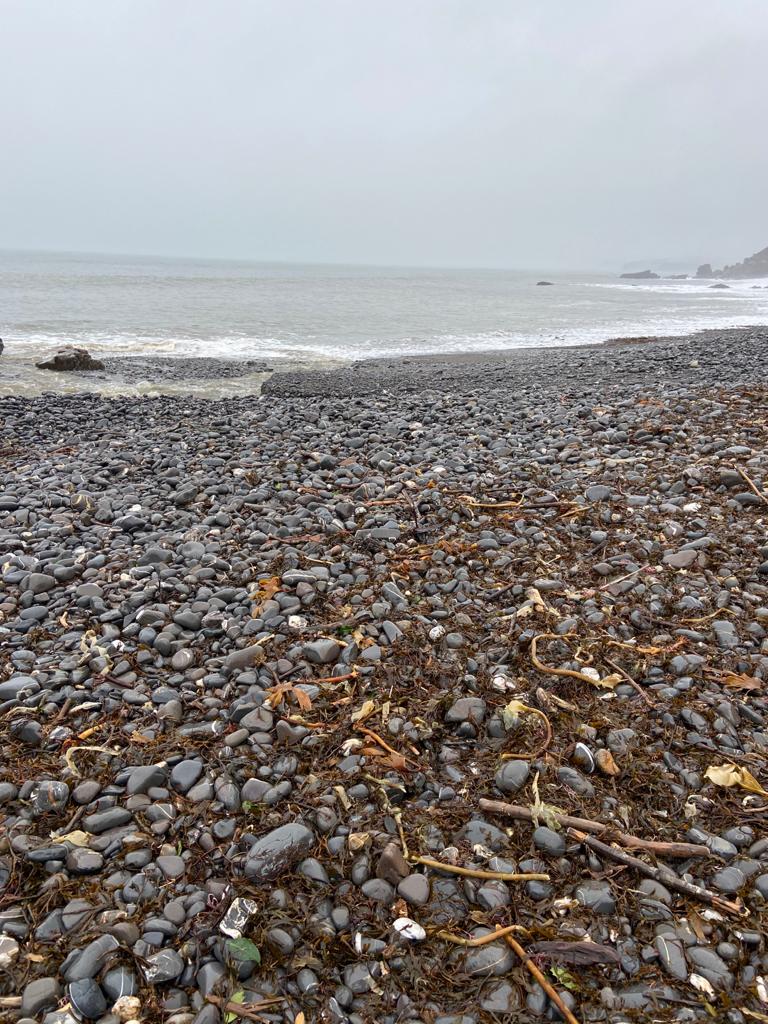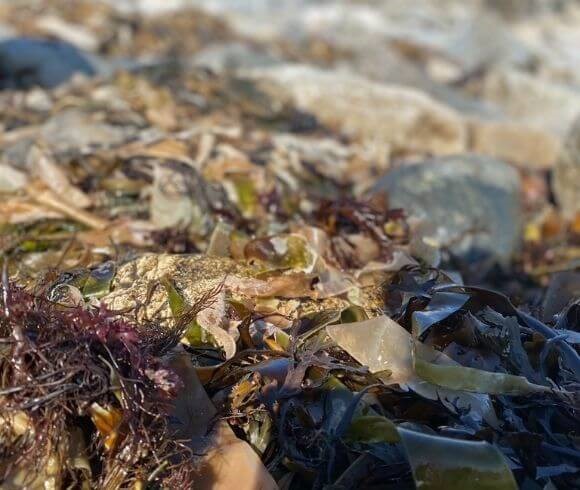We are lucky as we live very close to the seashore. So we are able to easily and sustainably harvest seaweed for use in our vegetable garden.
We enjoy picking up the seaweed, because we realise it’s such a great soil conditioner for the garden. We only ever pick up the seaweed on the shoreline, we never pick seaweed that is attached to rocks.

We have old fish bins that we use but you can or use some old sacks or onions sacks to allow it to dry. And I always prefer to wear gloves, but hubby doesn’t!
For people who do not live close enough to the seashore you can buy dried seaweed and kelp products that you can use in your vegetable garden.
Seaweed is fairly low in nitrogen, but seaweed boasts 60 elements, these include trace minerals, micro-nutrients, and even plant growth hormones and these all boost healthy plant growth.
The amazing thing with seaweed is it does not share any diseases with plants on the land. This means that seaweed will help improve the condition of your garden soil, as the seaweed breaks down it will help aerate the soil making it lighter and the soil will be able to hold moisture better, it will also help the health of the vegetable plants and it can also be used as a general fertilizer in your garden.

Some gardeners use seaweed as a thick mulch, a good thing about seaweed mulch is garden pests don’t like it as it’s salty and it goes very crunchy, but it’s great for the soil.
Many gardeners wonder if you can actually use seaweed straight in the garden and the answer is yes you can. I know some gardeners think the seaweed is too salty and some will wash it or spray it with a garden hose. We live in an area that has good rainfall so I do not worry about that. So we use it straight into the garden.
Personally, we use the seaweed in the winter and spread it straight onto the garden after we picked it up and allow Mother Nature to do its work.
If you want to use seaweed as a mulch apply around 2-4” layer and you will soon see how the seaweed starts drying and shrinking.
You can also use seaweed by composting, adding layers in your compost bin, you need to interlay seaweed with brown matter such as straw or leaves this allows it to have some air as otherwise it can just become a big slimy matter. You can wash the seaweed if you are worried about the salt. By adding seaweed to the compost bin your compost will get trace minerals which will all be added to your garden soil.

Seaweed tea: easy to make all you need to do is add the seaweed to a drum or bucket – it does need a lid – add the seaweed and fill with water, and leave for 3 weeks but you can leave the seaweed tea for several months. It gets smelly, but when you can’t smell the ammonia anymore then the tea is ready. You can then strain the tea and when you want to use it dilute it with water: one part seaweed tea to five parts water and – and feed you plants. This is great for the garden plants it feeds the foliage, it makes the plant roots stronger.
You can dry seaweed and make your own fertilizer. Dry the seaweed by laying it out in the sun until it’s dry and brittle. And crumble it into small bits. Use it around your plants as you need it.
Even if you can’t pick up fresh seaweed then I would still recommend buying yourself a bag of dried seaweed from a garden supplier. Your vegetable garden will love you for it as it will provide you with lots more vegetables.









